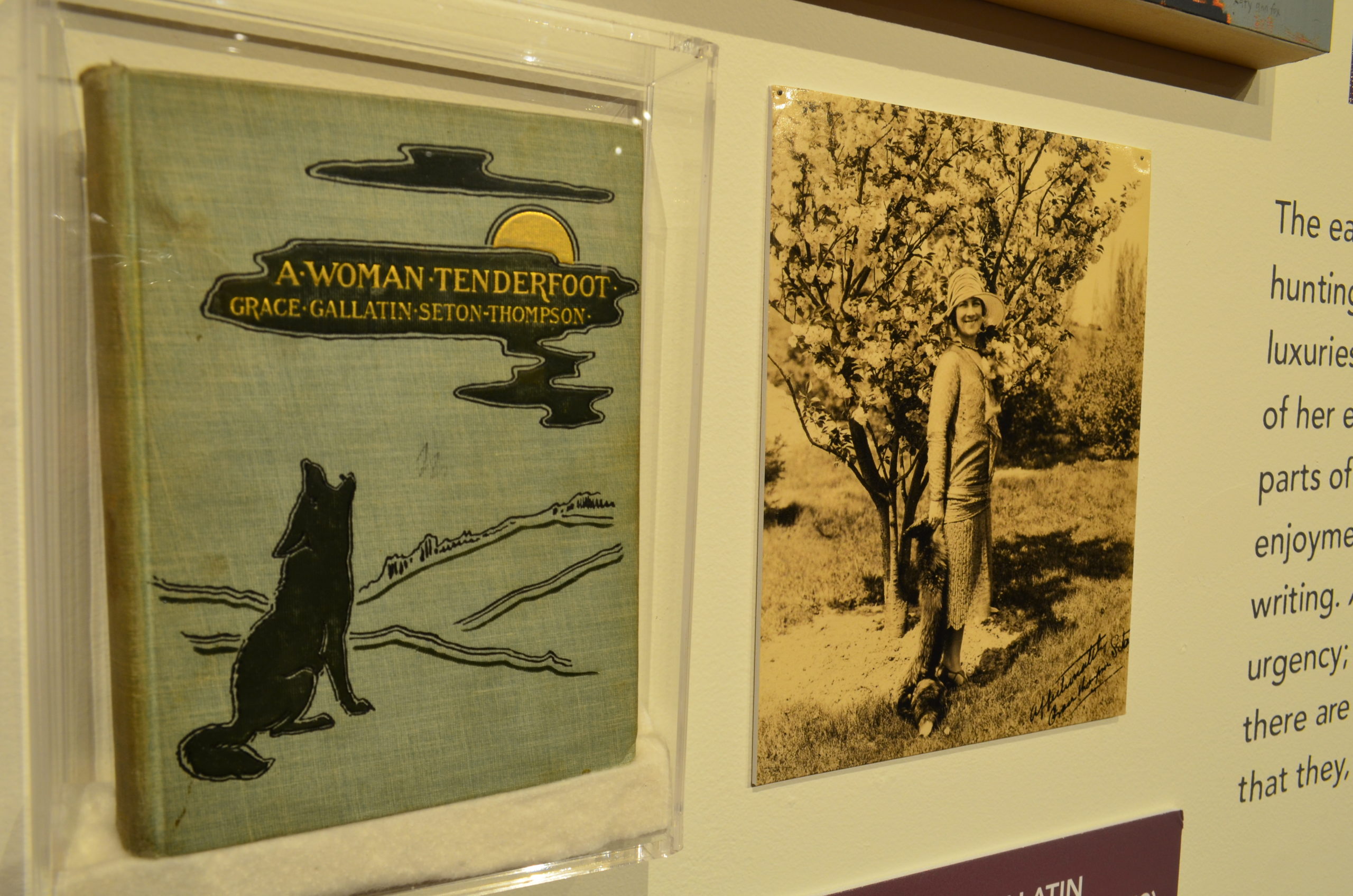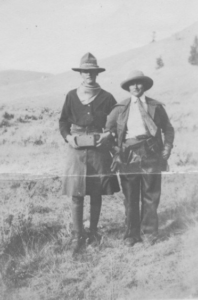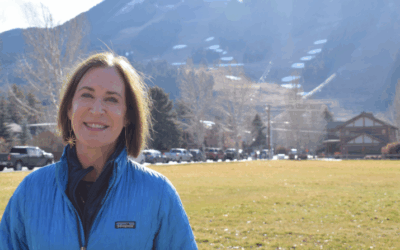What we understand about the lived experiences of diverse groups of people throughout history is evolving.
“Often times underrepresented voices are not evident in the historical record,” said Morgan Jaouen, executive director of the Jackson Hole Historical Society and Museum.
That lack of representation helped inspire the museum’s two new exhibits that opened Friday: “Mountains to Manuscripts” and “Wyoming Women.”
Last year, Wyoming celebrated 150 years of women’s suffrage. It became the first territory or state to grant women the right to vote in 1869. And that’s another reason Jaouen has been thinking about ways to authentically highlight Wyoming women throughout history.
That led her to the women who were able to publish during the 20th century, she said.
So Jaouen contacted private librarian and rare book seller Christy Smirl to curate “Mountains to Manuscripts.” It features Wyoming women writers and their published works dating from 1900 to 1950.
Smirl says they wanted to give people a sense of women authors “who are some of the lesser-known ones or the ones that used to be a big deal in their era, but maybe have been forgotten over the decades.”
Then Jaouen and Smirl created an all-woman team to make the exhibit come to life. Jenna Mahaffie did graphic design and Katy Ann Fox painted four original landscapes that pair with each writer and her book.

Paintings by Katy Ann Fox add a modern element to an exhibit rooted in the past, says Morgan Jaouen. (Robyn Vincent)
Jaouen provided Fox with excerpts from the books, but she didn’t expect Fox to instead devour the works. “Fox went out and bought each book and read them from front cover to back cover,” Jaouen said. That she spent time with each literary work “is so meaningful to this exhibit.”
For her part, Fox says she was riveted by the books. In particular, she liked The Branding Iron by Katharine Newlin Burt. “I want to bring it to a book club to talk about it with other people, especially other women. It’s so juicy, I don’t even want to say a word about what it is.”
The clues we can gather about The Branding Iron come from Fox’s painting: a wintry river scene set at Turpin Meadow. In the painting, a quiet cabin along the treeline depicts what Fox called “a little haven of safety during the Wyoming winter.”
Sitting in a glass case across from Fox’s painting is the time-worn manuscript Diary of a Dudine by Edith Houston Baily, great-grandmother of Jackson resident Maggie Moore.
The manuscript traces Baily’s experience on a 1916 hunting trip during a summer she spent at Bar BC Ranch when she was 20 years old. Baily happened to be the sole woman on that trip with an entourage of “five cowboys,” Moore said.
Moore’s cousin, the fourth Edith Baily of the family, discovered the manuscript in 2011.
She was visiting Jackson to climb the Grand Teton. While she waited for her husband to arrive on another flight, she found herself killing time at the Jackson Hole Historical Society and Museum. That’s when she saw a picture of a woman dressed in men’s clothing. A quote by Edith Houston Baily accompanied the photo. The young Baily promptly spoke with the curator and what she learned changed Moore’s life.
“But still, this is before women could even vote, and to be by herself with five men in the wilderness, it’s amazing.”
Her cousin’s discovery compelled Moore to leave her New York City home and move to Jackson. (She runs an art appraisal and management company here.) Last year, she wrote about her great-grandmother and the family’s discovery of her manuscript for the Jackson Hole News&Guide. That writing now sits next to her great-grandmother’s manuscript at the museum.
Moore says she has combed her great-grandmother’s manuscript multiple times. “I love it from a historical point of view, hearing her description of the town and going to the saloon.”
But what is most indelible is how it reflects her great-grandmother’s playful and unflappable spirit. “She also describes how she swaps clothing with one of the members of her party. He put on her skirt, she put on his riding chaps.” (As evidenced in the photo Moore’s cousin saw.)
Of course, she was in a very privileged position to visit Jackson Hole and embark on that camping trip, Moore said. “But still, this is before women could even vote, and to be by herself with five men in the wilderness, it’s amazing because I don’t think I have that in me—nine days camping on the ground, one of the horses got injured. There was a lot of drama.”
And Baily managed to kill an elk. She “just had the best time of her life before she went back east, to get married and live a more conventional life.”
The other exhibit showing, “Wyoming Women,” comes from the University of Wyoming’s American Heritage Center. The traveling exhibit features historical photographs of women from Wyoming and the West.
In a display of stunning strength, one such image depicts Bessie Prentis riding two horses, with each foot planted firmly on one horse. Jaouen says the photos capture the multi-dimensional lives of Western women of the past.

The skills and strength of Bessie Prentis are on display as part of the ‘Wyoming Women’ exhibit. (Courtesy Jackson Hole Historical Society and Museum)
“The lens they provide is women in leadership roles—outside, at home, in their careers, and showing different aspects of Wyoming life but through the eyes of these incredible women.”
“Mountains to Manuscripts” and “Wyoming Women.” show at the Jackson Hole Historical Society and Museum through April 4.







